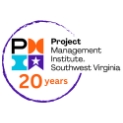March 25 2025 at 08:00PM
The Documentation Paradox: When Written Isn't Always Understood
The Illusion of Clarity
When we write documentation, we fall victim to what psychologists call the "curse of knowledge." We can't unknow what we know, so we unconsciously assume our readers share our context, vocabulary, and priorities. This cognitive bias creates a dangerous illusion of clarity.
Research in communication psychology shows that authors consistently overestimate how clearly their messages will be understood. When we create documentation, we have the full context in our minds, but our audience only sees what we've explicitly written down.
This phenomenon perfectly illustrates what happens with our project documentation. What makes complete sense to us often appears as disconnected fragments to our audience.
When Documentation Becomes a Checkbox
In many organizations, documentation has become a compliance activity rather than a communication tool. CYA, right?! We document because our methodology demands it, because it's a deliverable on our project plan, or because "that's how we've always done it." The act of documentation becomes separated from its purpose: creating shared understanding.
In many organizations, project managers create extensive requirements documents that routinely exceed dozens or even hundreds of pages. Yet when team members are asked about these documents, a common pattern emerges – almost no one reads them in their entirety. Developers skim for code-relevant details, designers extract visual requirements, and executives read only the executive summary. The documents themselves become bureaucratic checkboxes rather than effective communication channels.
The Documentation Spectrum: Finding the Sweet Spot
The solution isn't to abandon documentation entirely. Rather, we need to find the sweet spot on the documentation spectrum – the point where we provide enough information to create understanding without overwhelming our audience.
Too little documentation leaves team members guessing and creates knowledge gaps. Too much documentation overwhelms readers and buries critical information in a sea of details. The "just right" amount varies based on project complexity, team familiarity, and organizational culture.
Five Strategies for More Effective Documentation
After years of observing documentation successes and failures across dozens of project teams, I've identified five strategies that consistently lead to better outcomes:
1. Know Your Audience(s)
Different stakeholders need different levels of detail and formats. Executive sponsors might need a one-page dashboard, while developers require technical specifications. Creating multiple versions of documentation tailored to specific audiences dramatically increases comprehension.
Consider creating documentation "layers":
● Executive layer: High-level objectives, business benefits, major milestones
● Management layer: Dependencies, resource requirements, risk assessment
● Implementation layer: Technical details, acceptance criteria, testing protocols
2. Make It Visual
Our brains process visual information differently than text. Diagrams, flowcharts, and other visual elements can communicate complex relationships more effectively than paragraphs of explanation.
Consider how a lengthy systems integration document might be replaced with a series of visual workflow diagrams supplemented by brief explanations. This approach can reduce documentation time while simultaneously resulting in fewer clarification meetings and implementation errors.
3. Embrace Progressive Elaboration
Not all documentation needs to be created at once. Progressive elaboration – the practice of developing documentation in waves of increasing detail – allows you to focus on what's immediately necessary and evolve your documentation as the project progresses.
Start with a minimal viable document addressing only what's needed for the current project phase. Elaborate as you go, based on actual needs rather than hypothetical future requirements.
4. Test Your Documentation
We test our products and deliverables, but rarely our documentation. Consider implementing a simple documentation review process:
1. Identify a team member who wasn't involved in creating the documentation
2. Ask them to review it and explain back to you what they understand
3. Note any gaps between your intent and their understanding
4. Revise accordingly
This simple "explain it back to me" test can reveal assumptions and gaps before they impact your project.
5. Documentation as Conversation Starter
Perhaps the most important mindset shift is to view documentation not as the final word, but as
the beginning of a conversation. Documentation should clarify thinking, identify questions, and
facilitate discussion – not replace it.
The most effective project managers I know use documentation as a tool to surface misunderstandings early, when they're easier and less expensive to resolve. They explicitly tell team members, "This document represents my current understanding. If anything seems unclear or incorrect, let's discuss it."
Putting It Into Practice
Next time you're creating project documentation, consider these questions:
1. Who exactly will read this document, and what do they need from it?
2. What's the simplest way I could communicate this information?
3. How will I know if readers have understood what I intended?
4. What belongs in documentation versus what might be better communicated through other channels?
Remember, the goal isn't perfect documentation – it's shared understanding. Sometimes a 15-minute conversation accomplishes more than a 15-page document.
A Call to Action
I'd love to hear your experiences with the documentation paradox. What strategies have you found effective in your projects? What documentation pitfalls have you encountered? Share your thoughts in our upcoming coffee chat on this topic on April 1, 2025.
Want to discuss this topic further? Join our next coffee chat!
Topic: The Documentation Paradox: When Written Isn't Always Understood
Date: Tuesday, April 1, 2025
Time: 8-9am EST
Location: Virtual - Register below for a link to join!
Registration: https://pmi-swva.org/
Megan Adkins is the 2025 Southwest Virginia PMI Chapter President. With years of experience in project management leadership, she focuses on practical approaches to project communication and team alignment. Connect with her on LinkedIn: https://www.linkedin.com/in/megan-adkins/ or email her at madkins@pmi-swva.org



